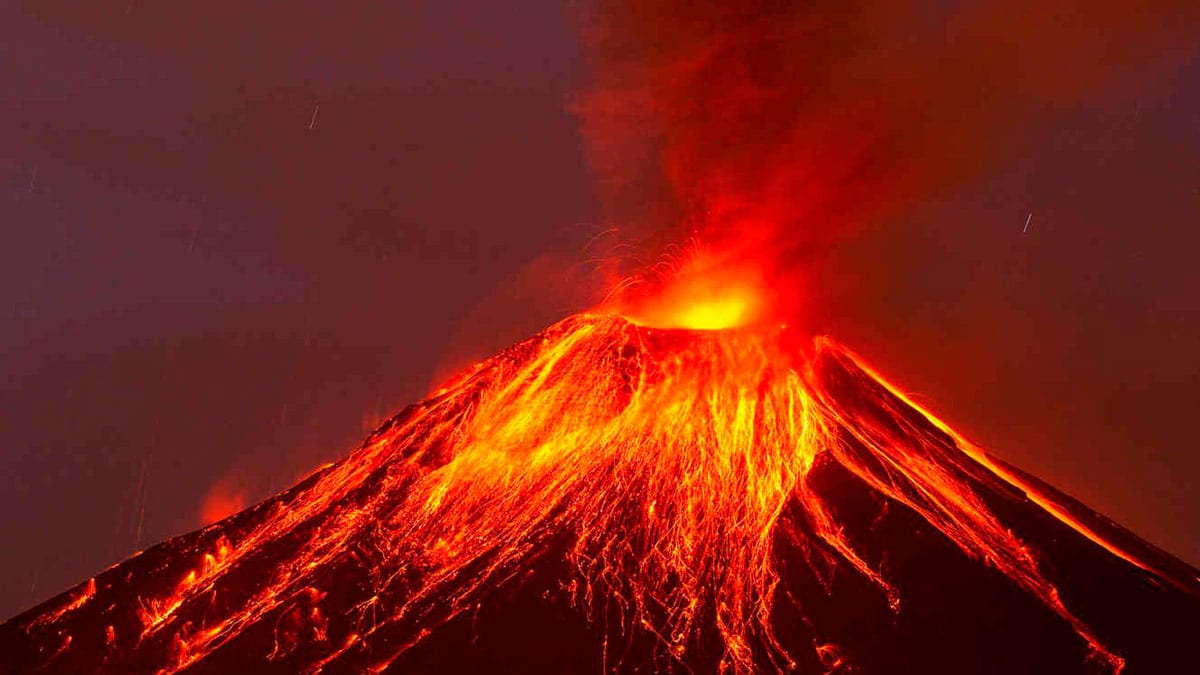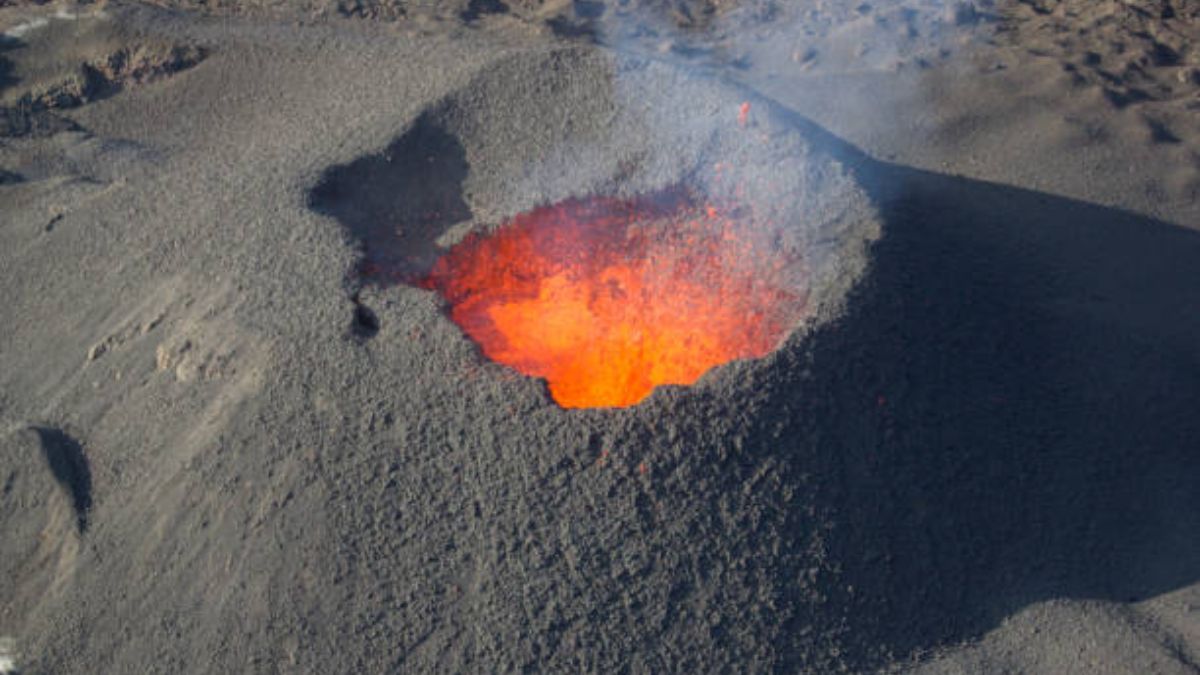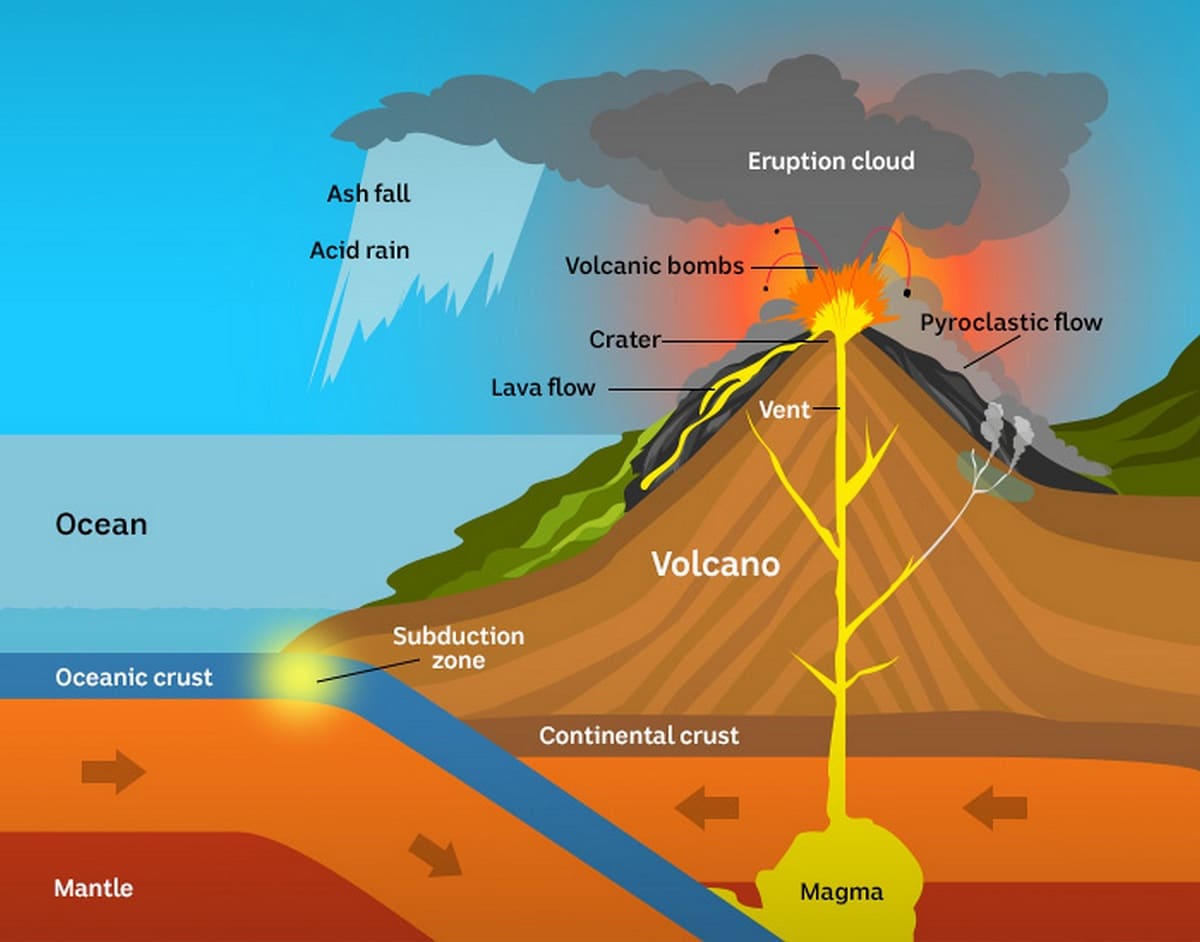
A volcano is a geological structure where magma rises from inside the earth. These usually have their origin in the limits of the tectonic plates, which are the result of their movement, although there are also so-called hot spots, that is, volcanoes located where there is no movement between the plates. To know how volcanoes form It is somewhat more complicated and, therefore, we are going to explain it in this article.
If you want to know how volcanoes are formed, this is your post.
How volcanoes form

A volcano is an opening or rupture in the earth's crust through which magma or lava is discharged from the interior of the earth in the form of lava, volcanic ash, and gas at high temperatures. They usually form on the edge of tectonic plates.The formation of volcanoes has different processes:
- Volcanoes with continental limits: When a subduction process occurs, oceanic plates (higher density) subduct continental plates (less dense). In the process, the subducted material melts and forms magma, which rises through the cracks and is expelled outside.
- Mid-ocean dorsal volcano: volcano formed when tectonic plates separate and form an opening through which magma produced in the upper mantle is driven by conventional ocean currents.
- Hot spot volcanoes: volcanoes produced by rising columns of magma that cut through the earth's crust and accumulate on the seafloor to form islands (like Hawaii).
Training conditions
In general terms, we can say that volcanoes can have different types depending on certain characteristics of their formation (such as the location or the exact process), but certain aspects of the volcanic formation are the basis of all volcanoes. The volcano is formed like this:
- At high temperatures, magma forms inside the earth.
- Climb to the top of the earth's crust.
- It erupts through cracks in the earth's crust and through the main crater in the form of eruptions.
- Pyroclastic materials accumulate on the surface of the earth's crust to form the main volcanic cone.
Parts of a volcano

Once the volcano has originated, we find different parts that form it:
- Crater: It is the opening that is located at the top and it is through which lava, ashes and all pyroclastic materials are expelled. When we speak of pyroclastic materials we are referring to all the fragments of volcanic igneous rock, crystals of different minerals, etc. There are many craters that vary in size and shape, although the most common is that they are rounded and wide. There are some volcanoes that have more than one crater.
- Boiler: It is one of the parts of a volcano that is often quite confused with the crater. However, it is a large depression that forms when the volcano releases almost all the materials from its magma chamber in an eruption. The caldera creates some instability within the volcano of life that is lacking for its structural support.
- Volcanic cone: it is the accumulation of lava that solidifies as it cools. Also part of the volcanic cone is all the pyroclasts outside the volcano that are produced by eruptions or explosions over time.
- Fissures: are the fissures that take place in the areas where the magma is expelled. They are slits or cracks with an elongated shape that gives ventilation to the interior and that takes place in the areas where magma and internal gases are expelled towards the surface.
- Chimney: it is the conduit through which the magmatic chamber and the crater are connected. It is the place of the volcano where the lava is conducted for its expulsion. All the more, and the gases that are released during an eruption pass through this area.
- Dykes: They are igneous or magmatic formations that are tube-shaped. They pass through layers of adjacent rocks and then solidify when the temperature drops.
- Dome: It is the accumulation or the mound that is generated of very viscous lava and that acquires a circular shape. This lava is so dense that it has not been able to move since the friction force is too strong with the ground.
- Magmatic chamber: It is in charge of accumulating the magma that comes from the interior of the Earth. It is usually found at great depths and is the deposit that stores the molten rock that is known as magma.
Volcanic activity

Depending on the activity in the frequency with which volcanoes have eruptions, we can differentiate different types of volcanoes:
- Active volcano: refers to a volcano that can erupt at any time and is in a dormant state.
- Dormant volcanoes: They show signs of activity, which typically include fumaroles, hot springs, or those that have been dormant for a long time between eruptions. In other words, to be considered inactive, it must have been centuries since the last eruption.
- Extinct volcano: Thousands of years must pass before a volcano is considered extinct, although this does not guarantee that it will wake up at some point.
How volcanoes and eruptions form
The eruption is one of the main characteristics of volcanoes, which helps us classify and study them. There are three different mechanisms of volcanic eruption:
- Magma eruption: gas in magma is released due to decompression, resulting in a decrease in density, which makes it possible for magma to erupt upward.
- Phreatomagmatic eruption: occurs when magma comes into contact with water to cool down, when this happens, the magma explosively rises on the surface and the magma splits up.
- Phreatic eruption: Occurs when the water in contact with the magma evaporates, as the surrounding matter and particles evaporate, only magma remains.
As you can see, volcanoes are highly complex and are frequently studied by scientists to try to predict their eruptions. I hope that with this information you can learn more about how volcanoes are formed and what their characteristics are.